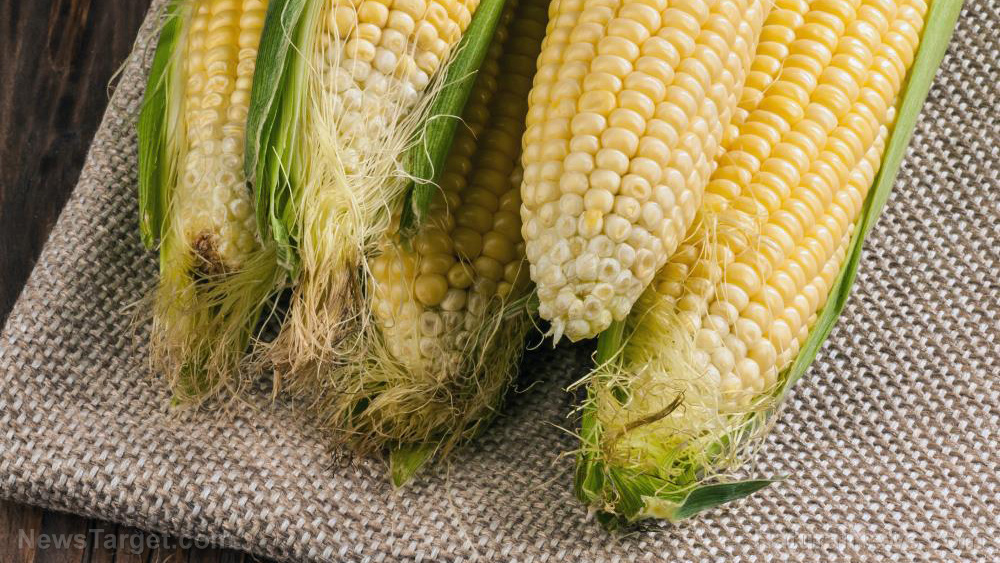What you’ll most likely be eating after the apocalypse
08/31/2018 / By Zoey Sky

When gathering provisions for your root cellar or survival stockpile, consider different scenarios. Do you have food with enough nutritional value? Can you keep up the energy of your survival group if you somehow lose access to one kind of food, like meat? (h/t to ModernSurvivalBlog.com)
What can you eat instead of meat?
When SHTF, it’s possible that you won’t have access to that much meat because of the following scenarios:
- The partial (or greater) breakdown of infrastructure
- Local, regional, national, or global “just-in-time” breakdowns
- Mega farms losing their ability to produce and distribute meat
- Lack of feed for livestock
- Broken distribution channels that can cut off supply chains
- Local small farmers having difficulty producing meat
- Loss of access to refrigeration (that is necessary to preserve meat)
- Depletion of wild game due to hunting
- The overloading of easy avenues of meat procurement
- Ponds and lakes being heavily fished
If you run out of meat when SHTF, you can still forage and cultivate vegetables on your homestead. But will these methods be enough to gather food supplies for you and your family?
To keep your loved ones from starving in a survival scenario, try to grow two of the highest calorie vegetables: corn and potatoes. These two vegetables are some of the highest calorie producers, and you can grow on your homestead. Corn and potatoes yield at least 85 calories per 100 g, or about 400 calories per pound (lb).
For your plan B (or C), consider these other pairings:
- Winter squash: Acorn squash (255 calories/lb) and butternut squash (200 calories/lb)
- Beets (200 calories/lb) and carrots (180 calories/lb)
100% organic essential oil sets now available for your home and personal care, including Rosemary, Oregano, Eucalyptus, Tea Tree, Clary Sage and more, all 100% organic and laboratory tested for safety. A multitude of uses, from stress reduction to topical first aid. See the complete listing here, and help support this news site.
These vegetables are ideal substitutes for different kinds of meat because they are high-calorie producers and you can preserve them easily throughout the winter compared to other kinds of vegetables.
Using a dry storage method, potatoes can keep for at least five to six months. The rest of the vegetables can be pressure canned.
Acorn and butternut squash will also keep well in dry storage. Since beets and carrots are root crops, they will also keep well as long as they are stored properly. You can preserve green beans via canning because they have 160 calories/lb.
If you’re going to grow potatoes for your stockpile, you’ll have access to a high-calories vegetable when and if SHTF. But this means that you must learn how to optimize yield while minimizing labor. To do so, you can grow potatoes in buckets. (Related: How to grow potatoes in a bucket.)
When growing corn, you can adjust the spacing between rows, so they grow a bit tighter together. Even if you’re stockpiling food for a small family, consider the calorie count of your chosen vegetables.
Start growing high-calorie vegetables like corn and potatoes today so you can figure out how much food you’ll need to keep your family fed for at least a year when SHTF.
The health benefits of potatoes
Potatoes are versatile vegetables that offer the following health and survival benefits:
- Potatoes are full of vitamin C – A medium-sized potato has 70 percent of the recommended daily intake of vitamin C.
- Potatoes are rich in potassium – Aside from bananas, potatoes are also full of potassium.
- Potatoes contain various minerals – Potatoes have different minerals like copper, iron, manganese, and tryptophan.
Potatoes can be preserved through canning, dehydration, and freezing. You can also store potatoes in a root cellar.
Learn more about other high-calorie foods that you can eat when SHTF at FoodSupply.news.
Sources include:
Tagged Under: corn, Food storage, food supply, fresh produce, gardening, home gardening, Homestead, homesteading, off grid, organics, potatoes, preparedness, prepper, prepping, self sufficiency, self-reliance, self-sustainability, survival, survivalist, sustainable living, urban gardening, urban prepping, vegetables
RECENT NEWS & ARTICLES
COPYRIGHT © 2017 COLLAPSE.NEWS
All content posted on this site is protected under Free Speech. Collapse.news is not responsible for content written by contributing authors. The information on this site is provided for educational and entertainment purposes only. It is not intended as a substitute for professional advice of any kind. Collapse.news assumes no responsibility for the use or misuse of this material. All trademarks, registered trademarks and service marks mentioned on this site are the property of their respective owners.




















